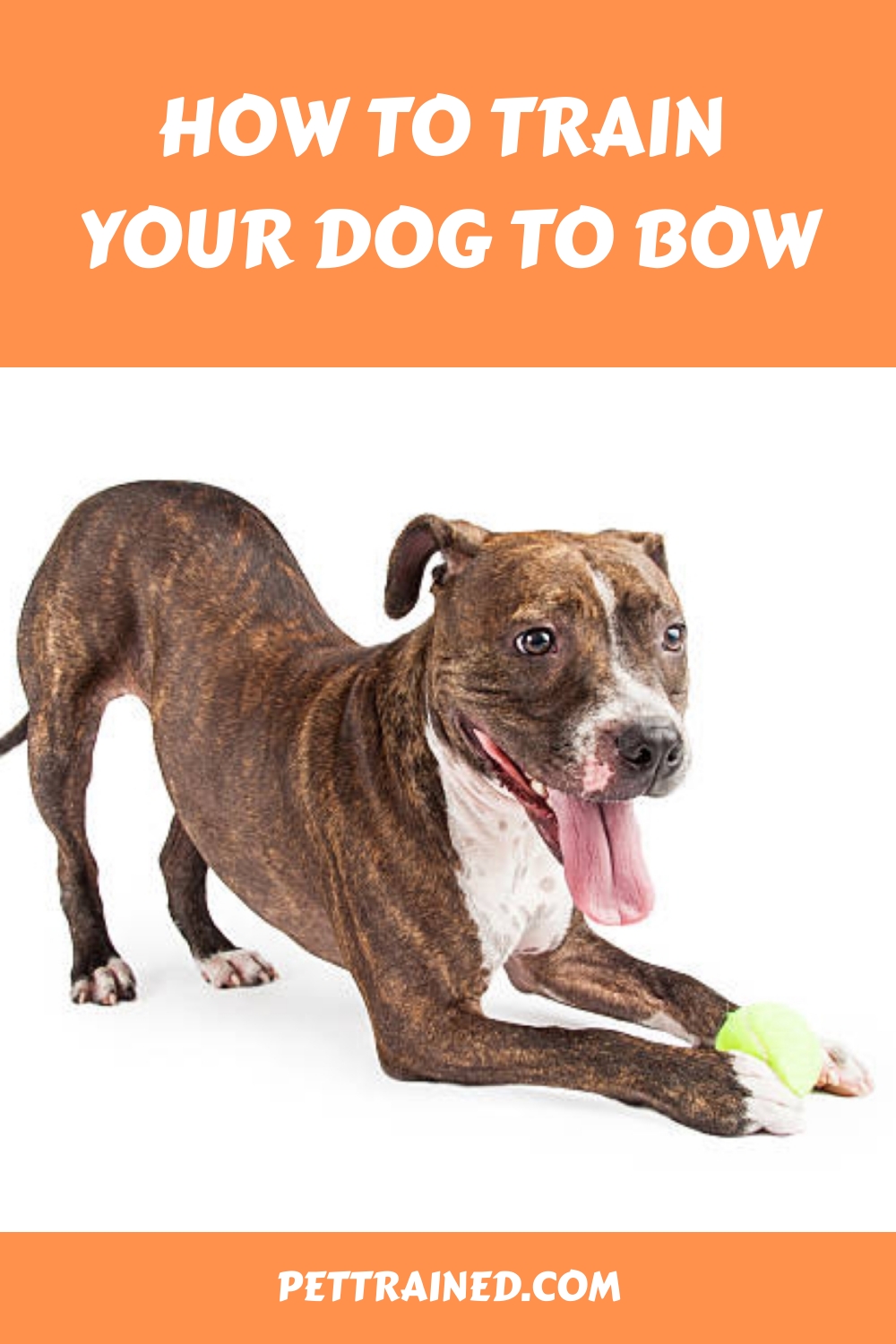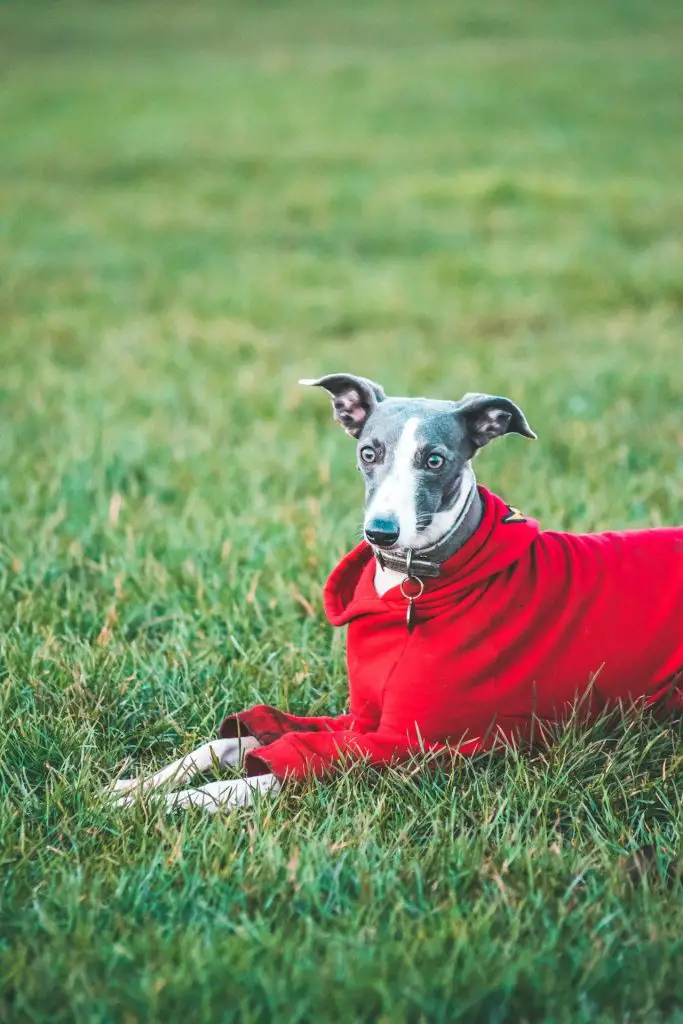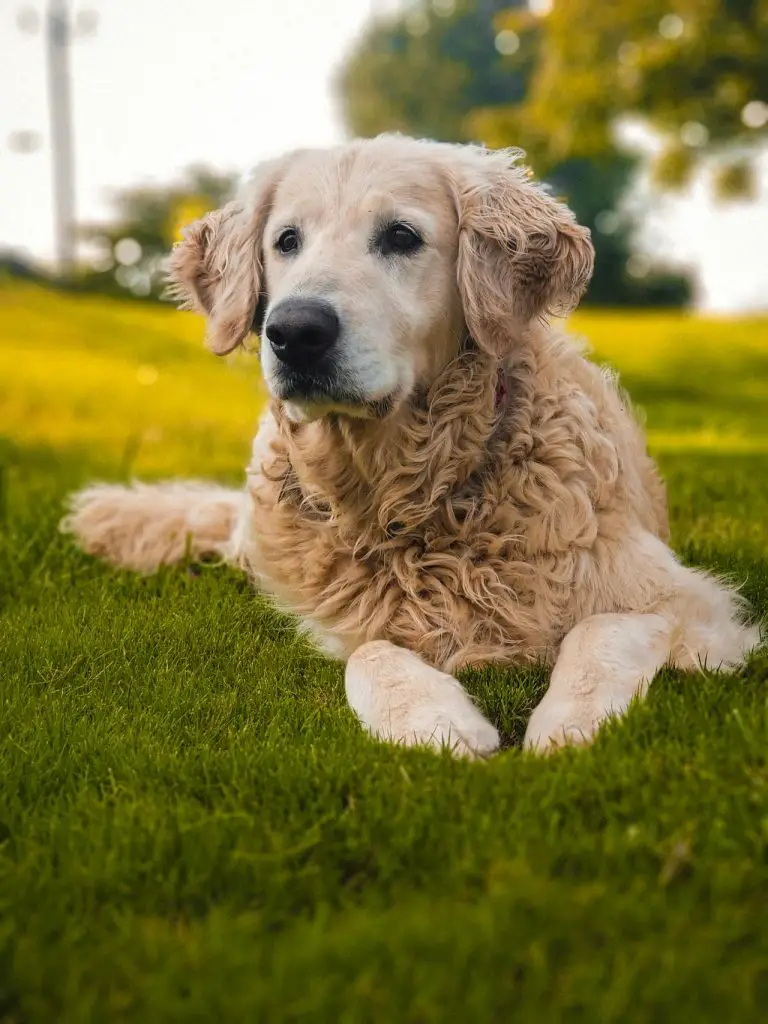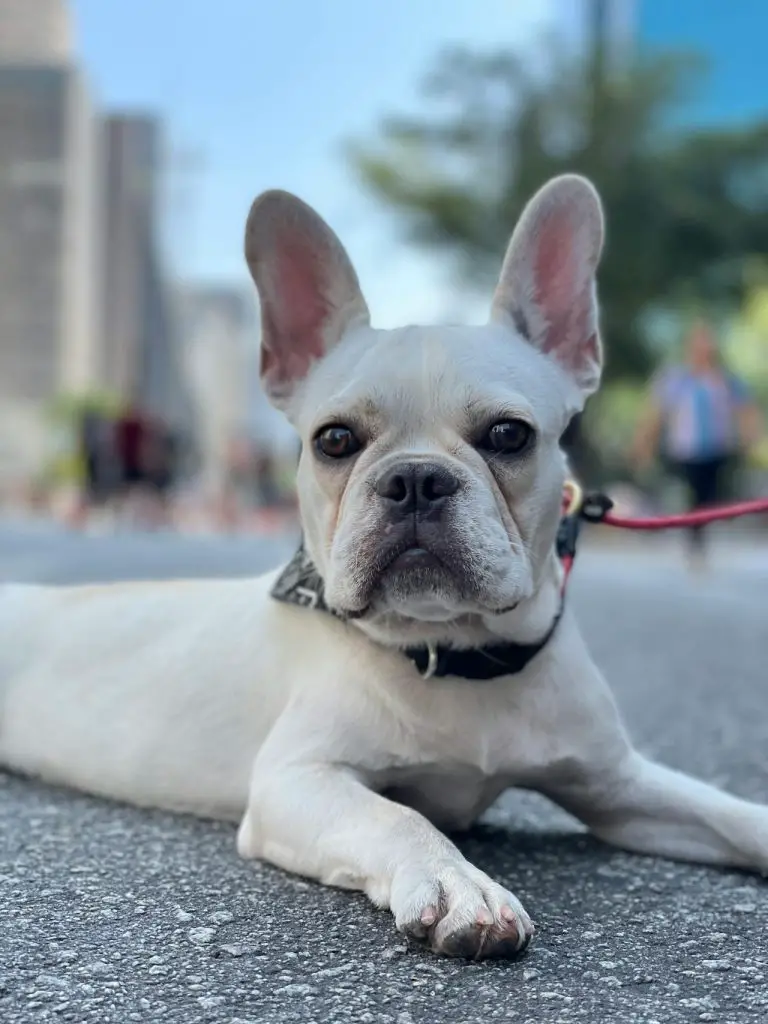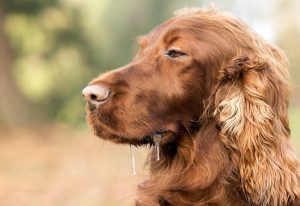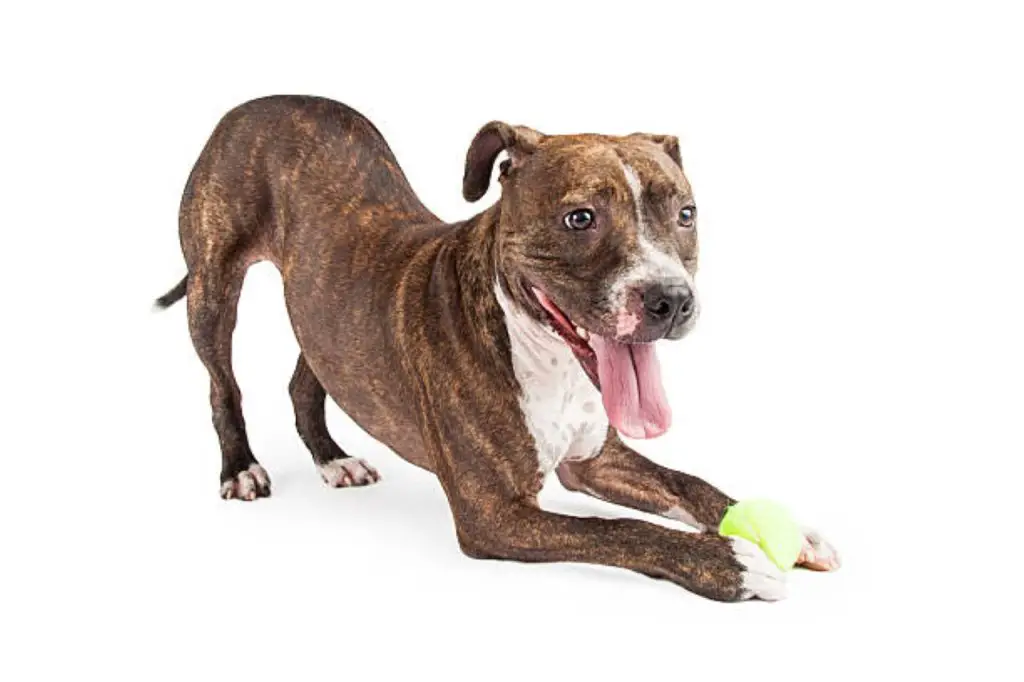
To train your dog to bow, start by gathering treats and equipment, such as a clicker, and choose a quiet training area with minimal distractions. Lure your dog into position by holding a treat near their chest, and reward them immediately when they achieve the bowed position. Add a verbal cue, like “bow,” and gradually phase out lures as they learn the command. Practice regularly, adding distractions and variations to help your dog generalize the behavior. By following these steps, you’ll be well on your way to teaching your dog this fun and stylish trick – and there’s more to master.
Table of Contents
Gather Treats and Equipment
To begin training your dog to bow, gather a stash of tasty treats and a few essential pieces of equipment, including a clicker and a quiet workspace.
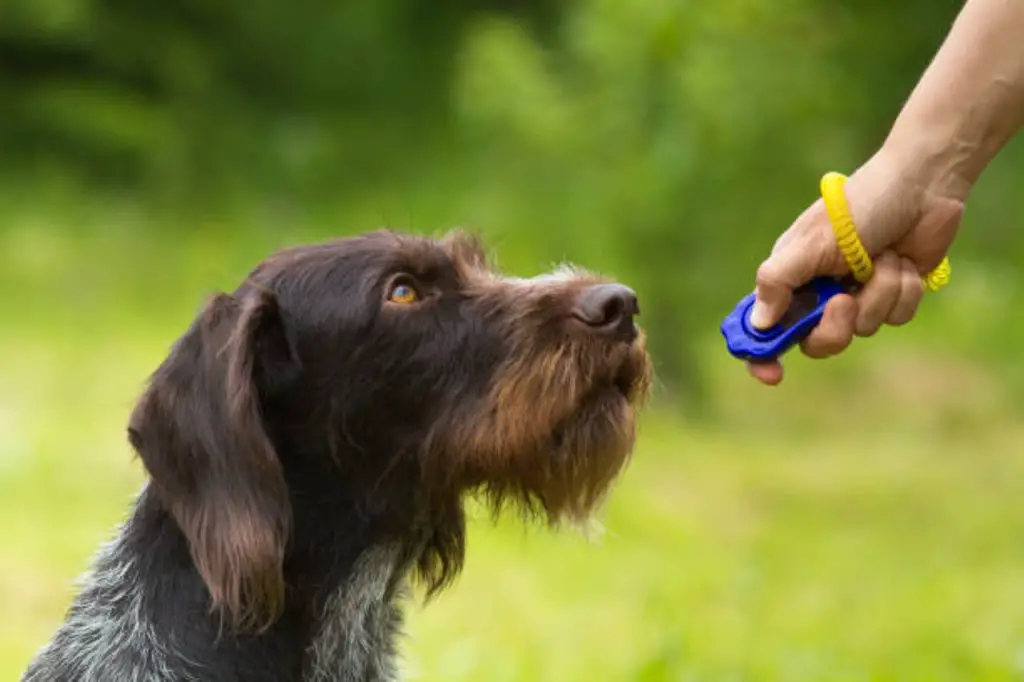
You’ll want to choose treats that your dog finds irresistible, such as small pieces of cooked chicken, cheese, or liver. Consider using a variety of treat types to keep your dog engaged.
Soft treats like training cubes or treat paste can be great for beginner dogs, while crunchier treats like biscuits or kibble can add texture and interest.
In addition to treats, you’ll need a clicker to mark the exact moment your dog performs the desired behavior. You can choose from a range of equipment options, including box clickers, oval clickers, or even a smartphone app.
This post contains affiliate links. However all the information provided on this site are my own honest opinions. See more in Disclaimer.
A quiet, distraction-free workspace is also essential for effective training. With these tools in hand, you’ll be well on your way to teaching your dog to bow.
Remember to choose equipment that feels comfortable and intuitive to use, so you can focus on rewarding good behavior and making progress.
Choose a Quiet Training Area
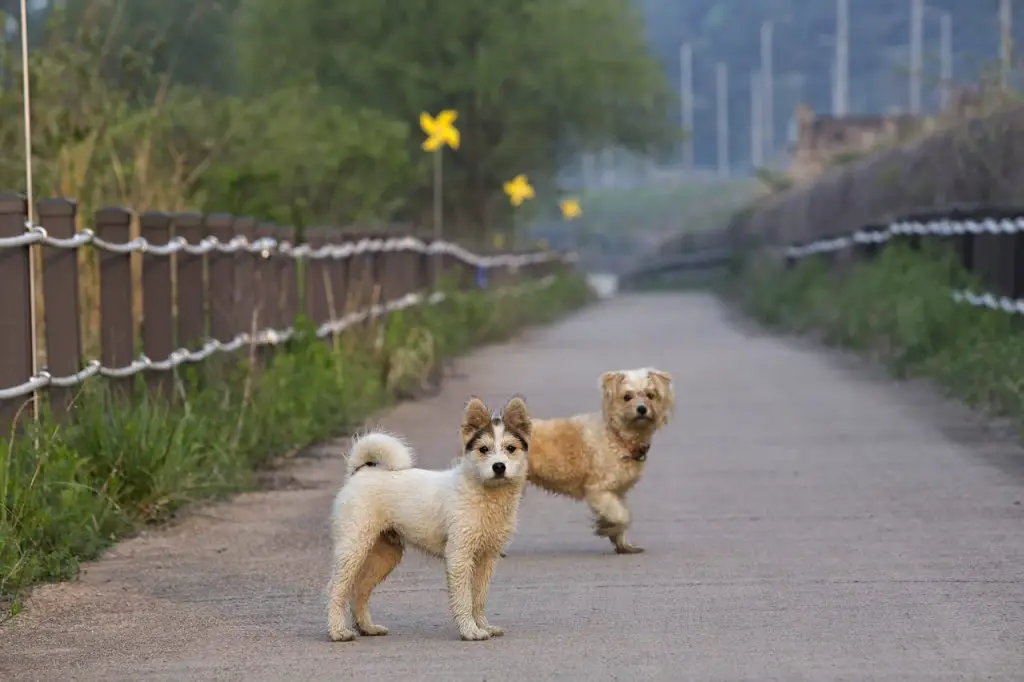
Now that you’ve got your treats and equipment ready, it’s time to choose a quiet training area where your dog can focus on learning.
You’ll want to select a space with minimal noise distractions that can interrupt the training process and make it harder for your dog to concentrate.
Minimize Noise Distractions
Selecting a quiet area for training your dog to bow is essential, as excessive noise can easily distract them and disrupt the learning process. You want your dog to focus on you and the command, not on the sounds around them.
Dogs with sound sensitivity may become anxious or even frightened by loud noises, which can hinder their ability to learn.
To minimize noise distractions, choose a room with minimal external noise, such as a quiet room in your home or a secluded area in your yard. Consider using white noise machines or calming music to create a more peaceful environment.
Environmental enrichment can also play a role in reducing noise distractions. Add some calming elements like plants or a water feature to create a serene atmosphere.
Select Distraction-Free Space
Choose a quiet training area that’s free from distractions, where your dog can give you their undivided attention and focus on learning the bow command.
This space should allow you to maintain your dog’s attention without interruptions or obstacles that might hinder the training process. Avoid areas with loud noises, high foot traffic, or other pets that may compete for your dog’s attention.
In an ideal scenario, select a quiet corner of your home or an isolated outdoor environment with minimal distractions.
Training in a distraction-free space offers numerous benefits, including faster learning, improved retention, and a stronger bond between you and your dog.
By minimizing distractions, you’ll be able to use positive reinforcement effectively and efficiently teach the bow command.
When training outdoors, consider utilizing a fenced area to prevent escapes or unwanted interactions with other animals.
This controlled environment will help you maintain focus on the training and maximize the training benefits, ensuring that your dog learns the bow command in a safe and efficient manner.
Consider Indoor Training
By shifting your training to a quiet indoor area, you can further minimize distractions and create an ideal environment that fosters a strong connection with your dog and accelerates the learning process.
Indoor training is particularly beneficial when you’re trying to teach your dog to bow, as it allows you to focus on the specific behavior without outdoor distractions interfering.
You can control the indoor environment, eliminating potential distractions such as loud noises, other animals, or passersby.
Here are four benefits of choosing a quiet indoor training area:
- Reduced Stress: Indoor training reduces stress for both you and your dog, creating a calm atmosphere that promotes learning.
- Improved Focus: By minimizing indoor distractions, you can focus on teaching your dog to bow without interruptions.
- Increased Training Duration: With a quiet indoor space, you can extend the training duration, accomplishing more in each session.
- Enhanced Communication: Indoor training enables clear communication with your dog, helping you develop a stronger bond and achieve the desired behavior, bowing, more efficiently.
Lure Your Dog Into Position

With your dog standing in front of you, hold a treat close to their chest to lure them into the bowed position. This is one of the most effective lure techniques to get your dog to bow.
By placing the treat near their chest, you’re encouraging them to lower their head and front legs, which will eventually lead to the desired bowed position.
As you lure your dog into position, pay close attention to their body positioning. You want their bottom to remain up in the air, while their front legs and head lower.
If their bottom starts to lower, you can try holding the treat a bit higher or moving it slightly forward to encourage them to keep their rear end up.
Remember to reward your dog with the treat and praise as soon as they achieve the bowed position, even if it’s just for a split second.
Add the Verbal Cue

Now that you’ve successfully lured your dog into a bow, it’s time to add a verbal cue to associate with the action.
You’ll choose a specific word or phrase to use consistently, which will eventually become the trigger for your dog to bow on command.
Choosing the Right Cue

As you begin phasing out the lure, a verbal cue becomes essential to signal your dog that it’s time to bow. Choose a clear, concise word or phrase that your dog can easily recognize.
The right cue will make all the difference in your dog’s ability to execute the command correctly.
There are different cue types to reflect upon, such as:
Trending in Dogs:
- Simple word cue: A single word like ‘bow’ or ‘down’ that your dog can easily recognize.
- Action cue: A phrase that describes the action, like ‘take a bow’ or ‘lower your head.’
- Target cue: A word or phrase that targets the specific behavior, like ‘низ’ (nose) for targeting the nose to the ground.
- Pattern cue: A combination of words or phrases that signal a sequence of behaviors.
When choosing a cue, prioritize cue consistency. Pick one cue and stick to it to avoid confusing your dog. Choose a cue that feels natural to you and your dog, and make sure it’s something you can consistently use in various situations.
This will help your dog learn to associate the cue with the action of bowing.
Adding the Verbal Command
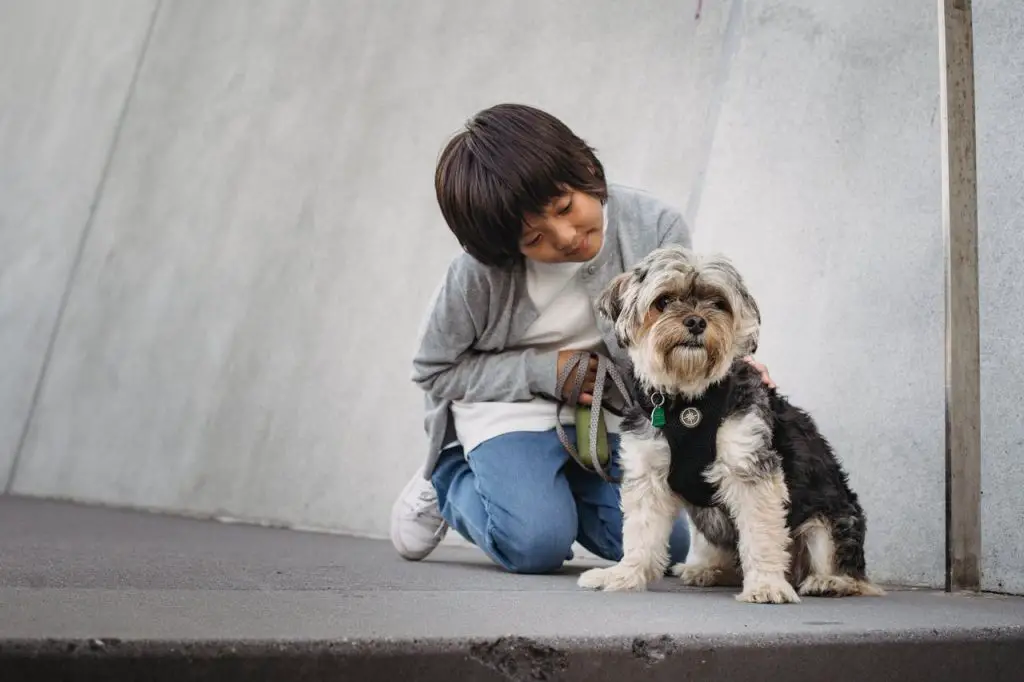
Integrating a verbal cue into your training sessions enables you to phase out the lure and solidify your dog’s understanding of the bowing action.
You’ll be using this verbal command to instruct your dog to bow from now on, so it’s essential to choose a word or phrase that you can consistently use.
Decide on a specific cue word, such as ‘bow’ or ‘down,’ and use it every time you lure your dog into the bowing position.
As you use the verbal cue, make sure to maintain verbal consistency. Use the same tone, pitch, and volume every time you give the command. This helps your dog associate the sound of the cue with the action.
Reward your dog with treats and praise when they respond to the verbal cue correctly. Positive reinforcement strengthens the connection between the cue and the behavior, making it easier for your dog to learn and remember the command.
Practicing the Cue Word
With the verbal cue in place, your training sessions shift from relying on the lure to using the cue word to prompt your dog to bow, allowing you to refine their understanding of the command.
You’ll now use verbal reinforcement to strengthen their connection to the cue. Focus on precise timing techniques, rewarding your dog the instant they bow.
Here’s how to proceed:
- Cue then Reward: Start by giving the verbal cue and immediately rewarding your dog for bowing.
- Pause Before Reward: Introduce a brief pause between the cue and the reward, allowing your dog to understand the cue’s meaning.
- Mix Up the Timing: Vary the time between cue and reward to keep your dog engaged and prevent them from anticipating the reward too soon.
- Practice, Practice, Practice: Repeat the process in multiple locations and contexts, helping your dog generalize the cue’s meaning and respond consistently.
Gradually Phase Out Lures

You’ll need to gradually phase out the lures to help your dog understand that the command, not the treat, is what triggers the bow behavior.
As you’ve been using treats to lure your dog into a bow, it’s crucial to make a gradual change to a treat-less cue.
Start by only rewarding your dog with treats occasionally, while still praising and acknowledging their correct behavior. This positive reinforcement will help your dog associate the praise with the action.
To begin phasing out the lures, try this: for every three or four times your dog bows correctly, reward them with a treat only once. Gradually increase the number of times your dog performs the behavior without a reward.
Remember to maintain the same level of enthusiasm and praise, even without treats. Your dog will begin to understand that the cue word, not the treat, is what triggers the bow behavior.
With consistency and patience, your dog will learn to bow without relying on lures, and you’ll be one step closer to mastering this impressive trick.
Practice the Bow Regularly
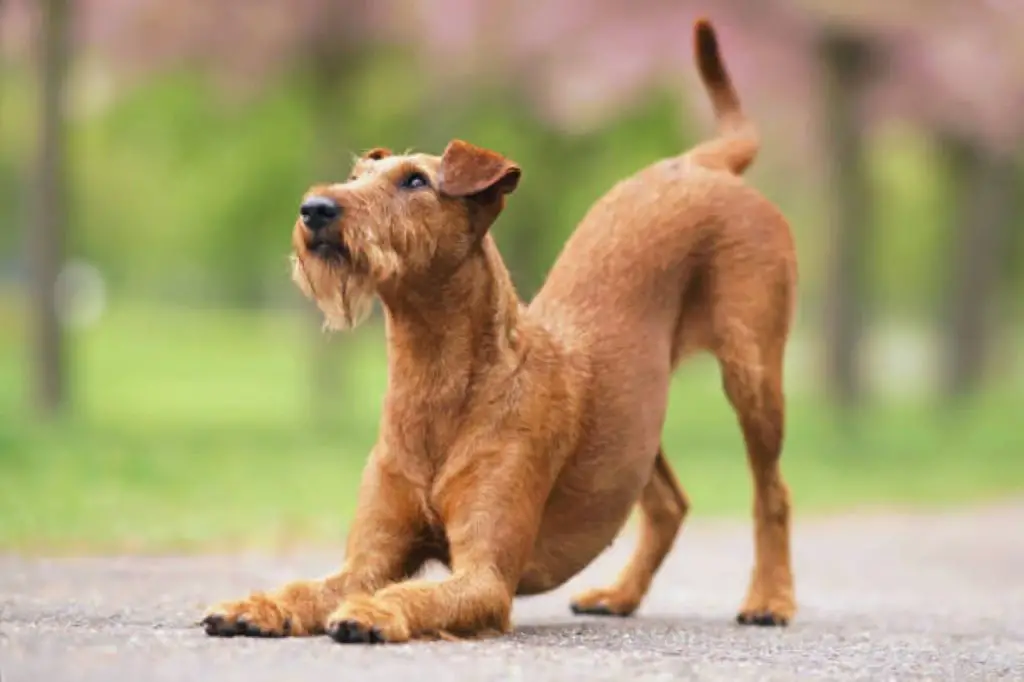
Now that your dog is learning to bow without relying on lures, regular practice sessions are essential to reinforce what they’ve learned and build their confidence in the behavior.
Practice regularly to maintain and strengthen their understanding of the command.
To make the most out of your practice sessions:
- Start with short sessions: Begin with short practice sessions of 5-10 minutes and gradually increase the duration as your dog becomes more confident in the behavior.
- Focus on bow duration: Encourage your dog to hold the bow for a few seconds before releasing; this will help them develop the muscle memory and understand the desired behavior.
- Use varied reinforcement techniques: Mix up the rewards and praise to keep your dog engaged and interested in the practice sessions.
- Practice at different times: Vary the time of day and the location of your practice sessions to help your dog understand that the command is universal and not limited to specific situations.
Add Distractions and Variations
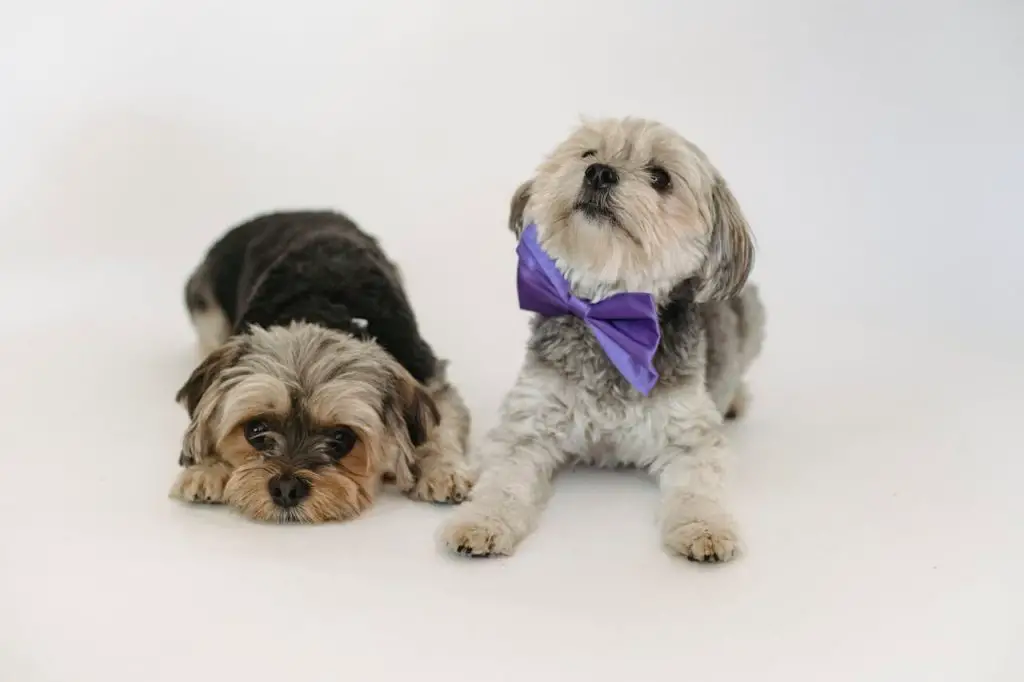
Adding distractions and variations to your dog’s bow training is essential for helping them learn to perform the behavior in a wide range of situations and environments.
As you continue to practice the bow with your dog, introduce various distraction types to challenge their focus. For example, you can add other people, dogs, toys, or treats to the training area.
Start with low-level distractions and gradually increase the intensity to help your dog generalize the behavior.
To motivate your dog to maintain the bow behavior despite distractions, use effective reward systems. Reward your dog with treats, praise, and affection when they successfully bow in the presence of distractions.
As your dog becomes more confident, phase out the rewards gradually.
You can also add variations to the bow behavior, such as having your dog bow on different surfaces or in different locations. This will help them understand that the behavior isn’t limited to a specific context.
Refine the Bow Technique
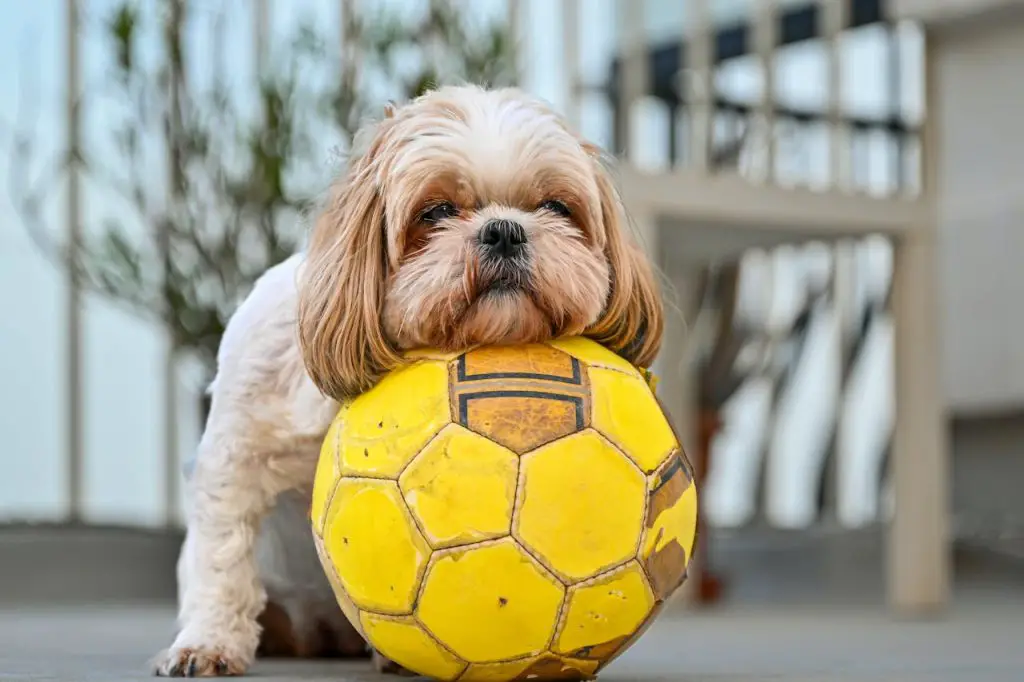
With your dog able to perform the bow in various situations and environments, refine their technique by focusing on proper form and execution.
This won’t only make the behavior more visually appealing but also help prevent any potential strain or discomfort for your dog.
To achieve this, you’ll need to employ bow reinforcement techniques that encourage your dog to maintain proper form.
Here are some positive reinforcement strategies to refine your dog’s bow technique:
- Focus on slow and controlled movements: Reward your dog for lowering themselves into a bow slowly and deliberately, rather than rushing into the position.
- Encourage a deep, sweeping bow: Hold treats or toys near the ground to entice your dog to lower their head and front legs, creating a deeper, more dramatic bow.
- Maintain a steady position: Teach your dog to hold the bow position for a few seconds before releasing, which will help them develop muscle memory and consistency.
- Gradually phase out lures: As your dog becomes more comfortable with the bow behavior, start to phase out treats and toys, using praise and affection as rewards instead.
Frequent Questions
You can teach your dog to bow on command regardless of age, using positive reinforcement training methods. Puppies and adult dogs alike respond well to rewards-based training, so don’t worry about your dog’s age, just start training!”
You’ll see progress in training duration depending on your dog’s motivation and consistency of practice. With positive reinforcement, a motivated dog can learn to bow in a few days to a week, while others may take longer.
You can train your dog to bow without using treats by leveraging alternative training methods, such as toys and praise, to provide positive reinforcement, but it’s vital to find what motivates your dog to guarantee successful training.
Over 20% of dogs experience physical limitations; however, you can still train your dog to bow using adaptive techniques. You’ll explore alternative methods that cater to their specific needs, ensuring a fun and safe learning experience.
As you train your dog to bow, you’ll discover it also enhances obedience benefits, like improved focus and responsiveness. By incorporating specific training techniques, such as positive reinforcement and repetition, you’ll strengthen your dog’s overall obedience.
